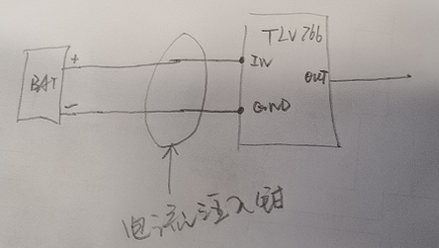Hi team,
Customer report there is a output abnormal issue with BCI test.
The current injection clamp as shown in below picture's circle that inject interference signals of 1-400MHz, and then there will be AC signal in this section of wire, but also in output of TLV766-Q1.
This will cause some unexpected impact in wireless MCU circuit which is powered by TLV766-Q1.
Is there any way to filter out this AC amount? Mainly focus on the following frequency points: 14MHz 27MHz 41MHz 55MHz 67MHz. Thanks.

BR.
William

